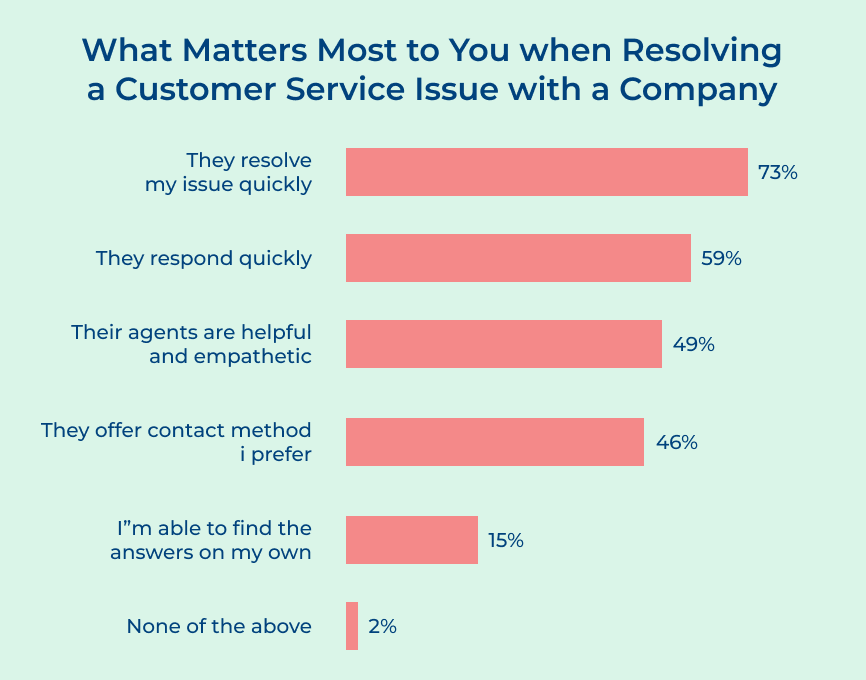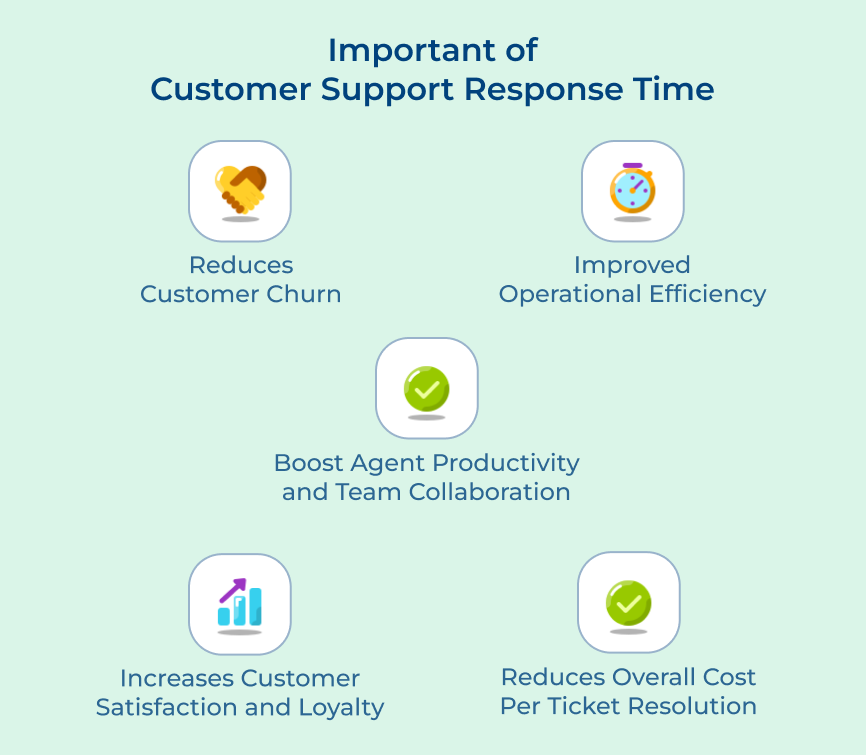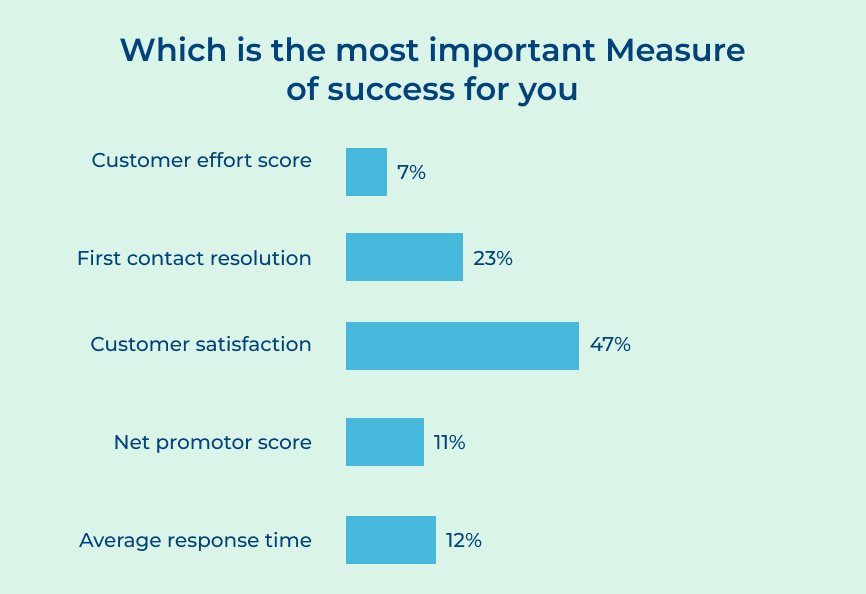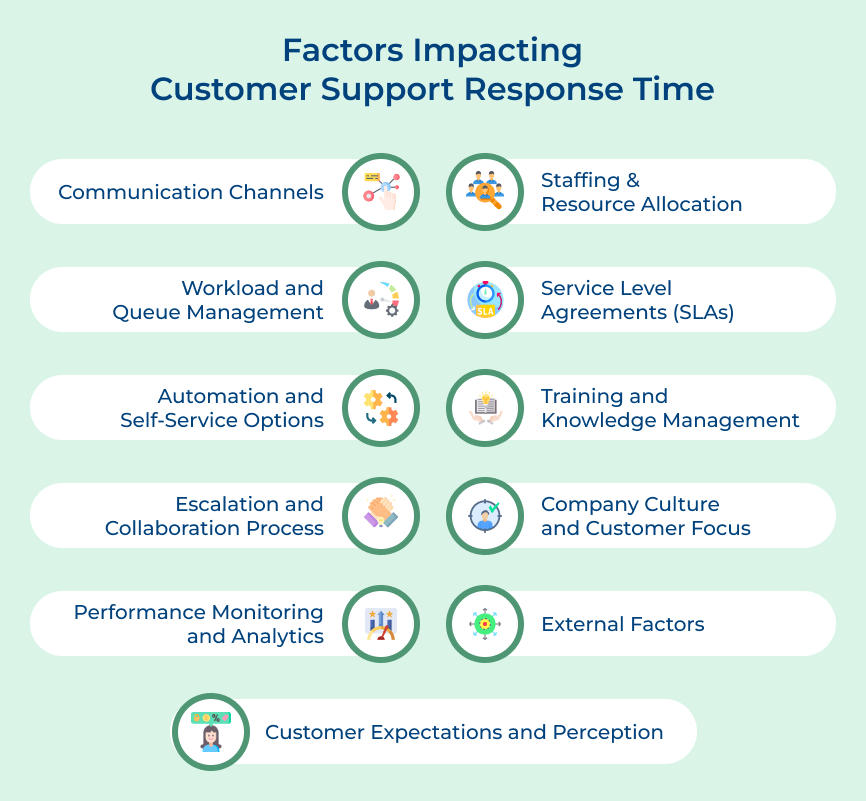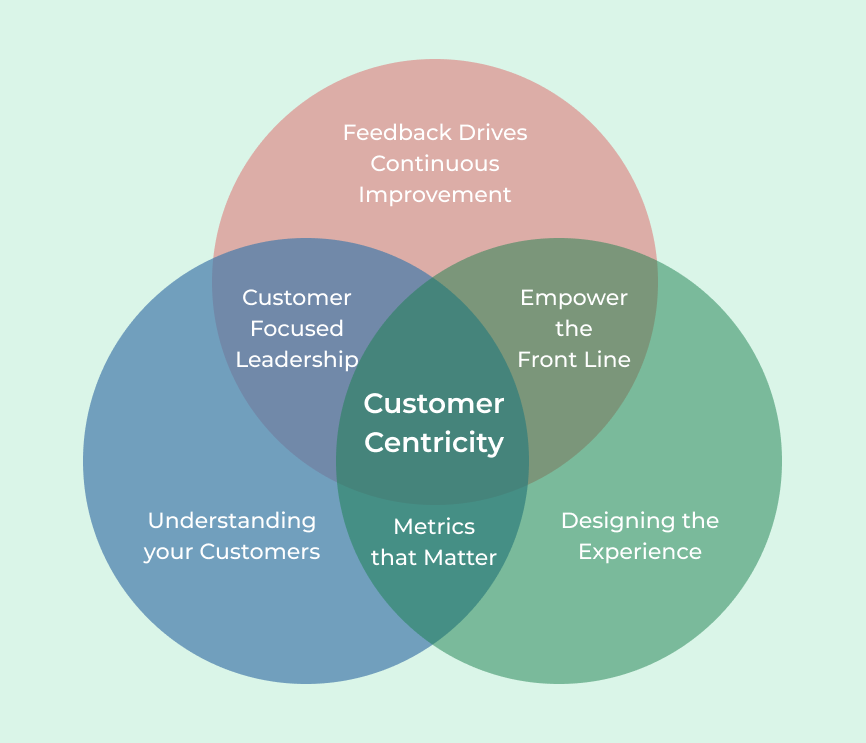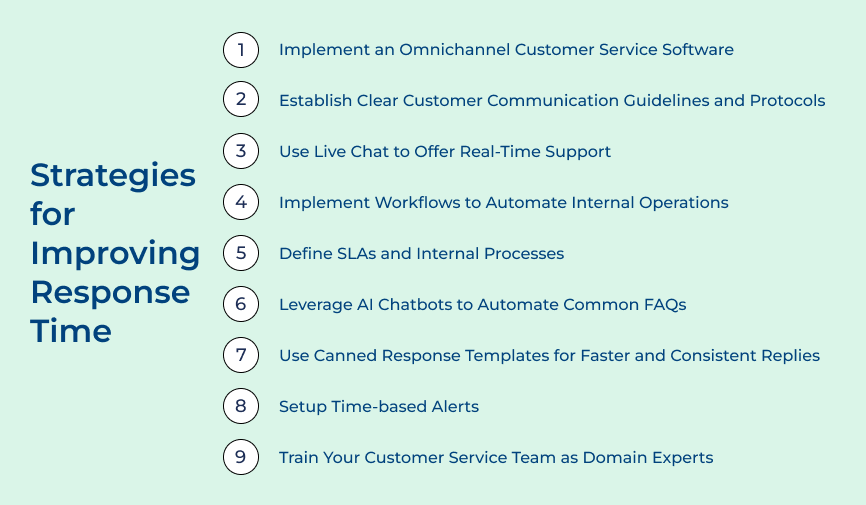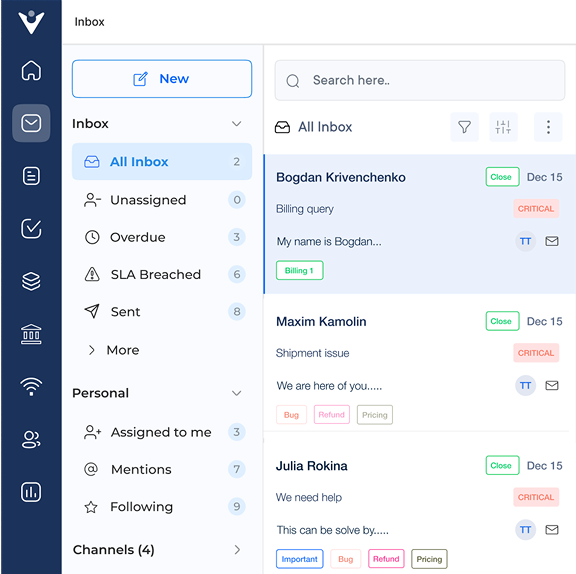The quantity and type of communication channels provided by a company play a huge role in its response time. When a company offers multiple channels, it may require more resources and coordination to respond to customer queries across all channels effectively.
The efficiency and integration of these channels also play a role. A company, for example, can streamline the response time if its service team has an integrated system that consolidates customer inquiries from various channels into a single interface.
-
Staffing and Resource Allocation
The availability and allocation of customer service staff directly impact response time. Adequate staffing levels are essential to handle incoming inquiries promptly. Insufficient staffing can lead to delays and frustrated customers.
Resource allocation includes not only the number of staff members but also their skill sets and expertise. Having a team with diverse skill sets ensures that different types of customer inquiries can be addressed effectively and promptly.
-
Workload and Queue Management
The volume of incoming customer inquiries affects response time. High volumes of requests may create backlogs, increasing the time it takes to respond to each customer. Efficient queue management systems and processes can help distribute workload effectively, reducing response time.
Balancing workload across customer service agents and providing them with tools to manage their queues can optimize response times. When the workload is distributed evenly among agents, it reduces the chances of any individual agent becoming overwhelmed.
-
Service Level Agreements (SLAs)
SLAs define the expected response times for different types of customer inquiries. The agreements may differ on the basis of the urgency and severity of the issue. Adhering to SLAs is crucial to meet customer expectations and ensure timely responses.
Clear SLAs help set internal benchmarks and goals for customer service teams. It ensures that they prioritize their workload and allocate resources accordingly.
-
Automation and Self-Service Options
Automation plays a significant role in response time optimization and customers prefer it too. 60% of US consumers prefer an automated self-service for simple customer service tasks, such as a website or mobile app.
Offering self-service options, such as knowledge bases or FAQs, enables customers to find answers to their questions independently. It reduces the need for direct interaction and can lead to faster response times for more complex or unique inquiries that require human assistance.
-
Training and Knowledge Management
Well-trained customer service representatives equipped with extensive product knowledge and problem-solving skills can respond to customer inquiries more efficiently. Conduct regular training programs and provide resources for agents to stay updated on product information.
Effective knowledge management systems that store relevant information, documentation, and troubleshooting guides can also expedite response times by enabling agents to access necessary information quickly.
-
Escalation and Collaboration Process
Complex customer inquiries or issues that require input from multiple departments or higher-level expertise may experience longer response times. Establishing clear escalation and collaboration processes within the organization ensures that customer inquiries are directed to the appropriate personnel promptly.
Collaboration tools, such as shared internal communication platforms or CRM systems, facilitate efficient communication among team members, enabling them to work together to resolve customer inquiries faster.
-
Company Culture and Customer Focus
An organizational culture that prioritizes customer service and responsiveness can significantly impact response times. When the company values the importance of timely customer support, employees are more likely to prioritize response times. They will also make it a priority in their day-to-day work.






